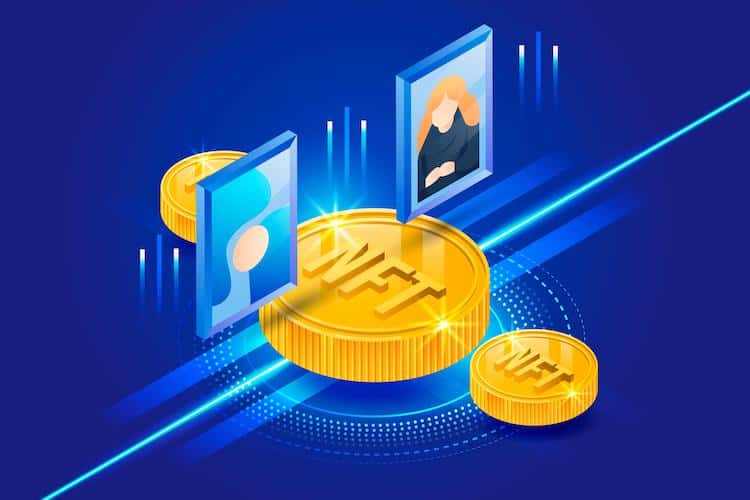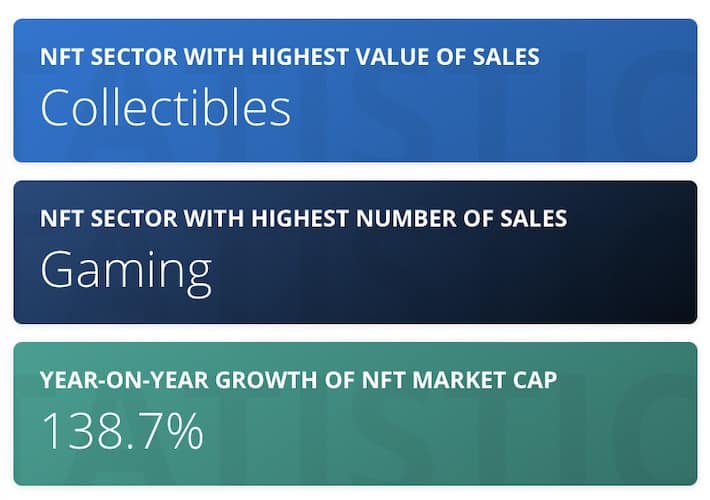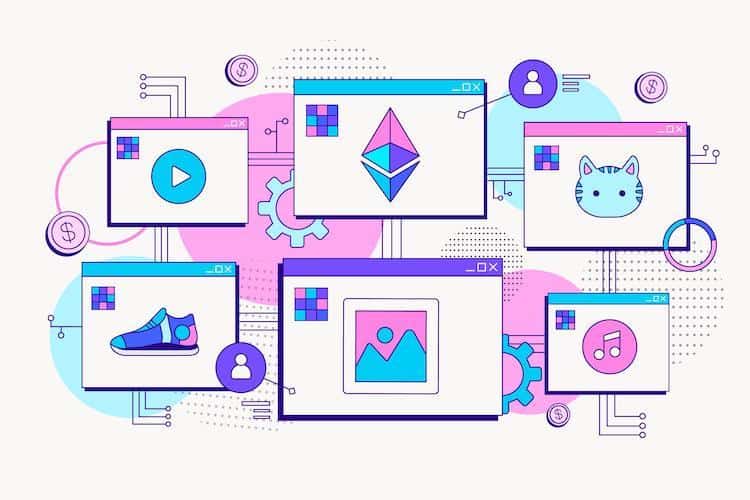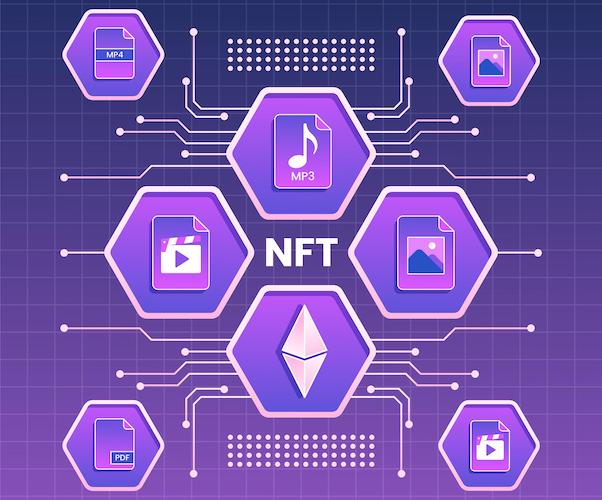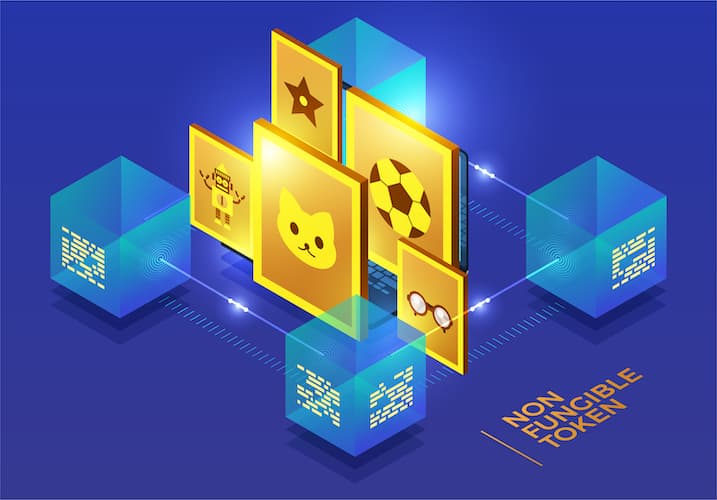The time to create an NFT marketplace website is now. People spend billions of dollars on fancy digital assets, so why not build a business out of it?
It took Bitcoin a little over ten years to approach $69,000. A random NFT, a one-of-a-kind crypto token in the form of a JPEG image, sold for $69 million in a little under a month.
If you want to learn how to develop an NFT marketplace from scratch, this blog is a great start. We’ll discuss tips and tricks and go through specific steps of building an NFT website like OpenSea.
Top Takeaways:
- Starting an NFT marketplace app when more and more people realize they can speculate on memes, images, and other digital content presents a unique business opportunity. NFT stores profit from commissions regardless of whether NFT prices go up or down.
- One of the most significant decisions you need to make before creating an NFT marketplace is which blockchains you want to support. Ethereum is a highly congested network at the moment and can’t be relied on as a single platform.
- Find a way to implement elements of decentralized finances into your NFT marketplace to widen its area of application and increase its value.
Table of Contents:
- 3 Reasons Why Developing an NFT Marketplace is a Good Opportunity in 2022
- Successful Competitors in the Market
- NFT Marketplace Must-Have Features
- How to Choose a Tech Stack to Create an NFT Marketplace Website
- 5 Steps to Build an NFT Marketplace Platform
- NFT Marketplace Development Cost
- How to Make Money with an NFT Marketplace
3 Reasons Why Developing an NFT Marketplace is a Good Opportunity in 2022
Why would you want to create your own NFT marketplace? Well, there are quite a few arguments in favor of why building such a platform may turn out a very profitable business.
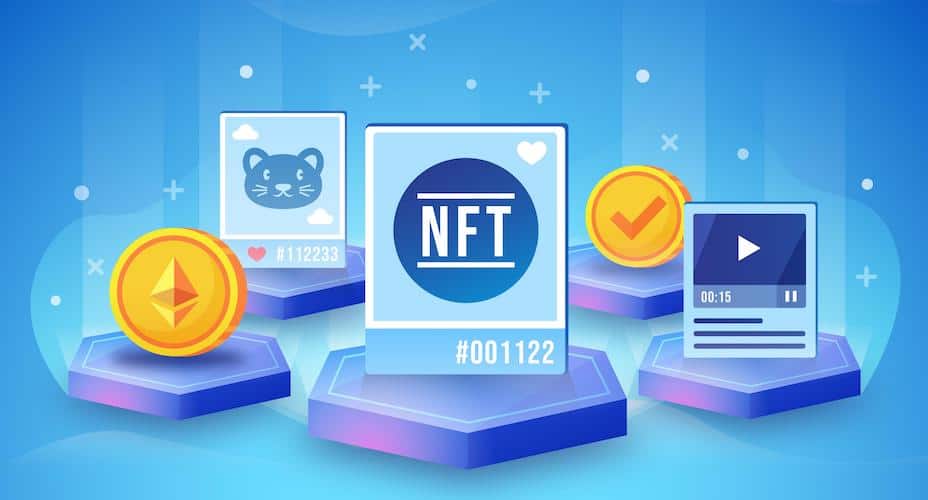
NFTs are a relatively new concept in crypto. This notion of cryptographically secure and verifiable ownership of digital (and sometimes even physical) assets develops as we speak. At the same time, the momentum NFT has been gaining has led to the appearance of a burgeoning business selling NFT domain names.
What is NFT?
NFT is short for a non-fungible token, meaning each digital asset such tokens represent is unique and can’t be exchanged for the same asset simply because it does not exist.
Because an NFT market place at its core is nothing but an e-commerce store for people to sell and buy virtual stuff. That means the industry is very tolerant towards new players entering the stage, as long as their products add value to customers. Think of all the e-commerce stores you’ve purchased from. Don’t you think there are enough images, videos, songs, e-tickets, in-game items, and other digital assets to stock up as many NFT marketplaces?
Friendly DeFi onboarding
Since NFTs exist on blockchains and use the technology, they become an easy entry point for crypto newbies. When someone buys a piece of crypto art at an NFT selling website, they are likely to try out other decentralized finance instruments:
- crypto trading
- investments/staking/farming
- loans and borrowing
I mean, do you want to start an NFT marketplace like an e-commerce site for selling some particular type of NFTs? And that’s a good use case in itself, by the way.
However, you may want to include extra DeFi features, e.g., NFT-backed loans, trading, and even consider supporting NFTs with fractional ownership and other NFT categories. We’ve all seen popular NFT trading platforms like Axie Marketplace, Nifty Gateway, or Rarible trending like nothing else in the crypto space.
Also Read: Loan App Development Guide
Mad gains
Of course, the whole NFT craze is influenced mainly by the mad gains that crypto makes possible. I believe only a coterie of genuine crypto adepts buys non-fungible tokens to gloat over their collection. Most people get into this to speculate. As long as they keep doing that, any website for NFTs will be profitable, taking its commission cuts.
Read about our experience in marketplace app development
Successful Competitors in the Market
The most talked-about NFT marketplaces include OpenSea, Axie Infinity, CryptoPunks, Rarible, SuperRare, NBA Top Shot, and Foundation.
OpenSea
Date founded: 2017
Headquarters: New York City
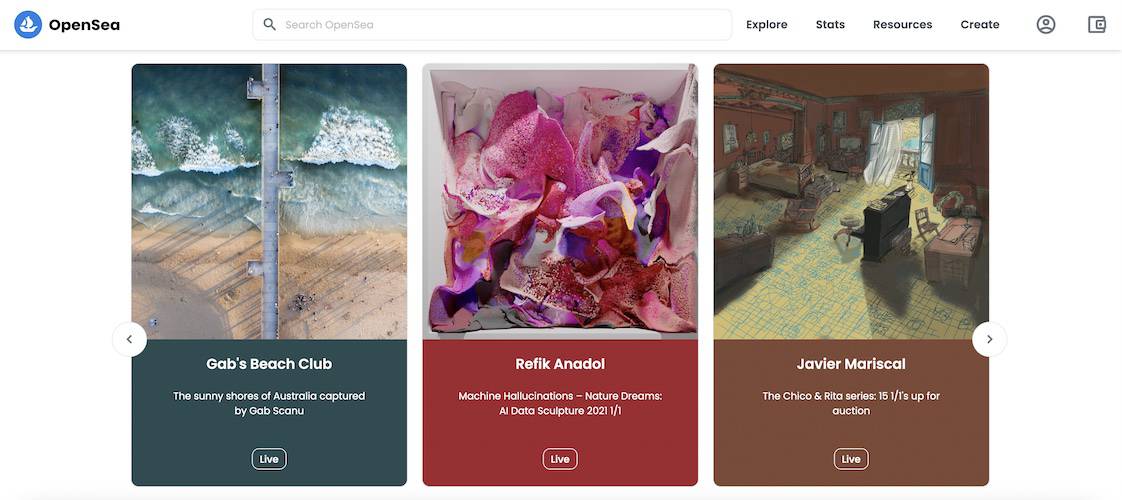
Supported blockchains: Ethereum, Polygon, Klatyn.
Business model: customer who sell NFTs pay 2.5% of the price from each NFT sale.
Rarible
Date founded: 2020
Headquarters: Wilmington, DE
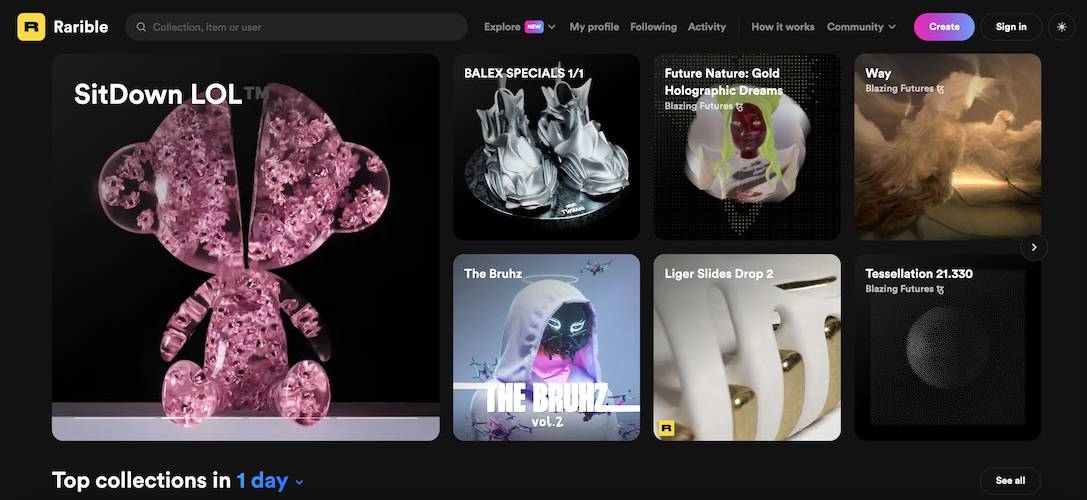
Supported blockchains: Ethereum, Flow, Tezos.
Business model: 2.5% from buyers and sellers at the same time.
SuperRare
Date founded: 2018
Headquarters: Newark, DE
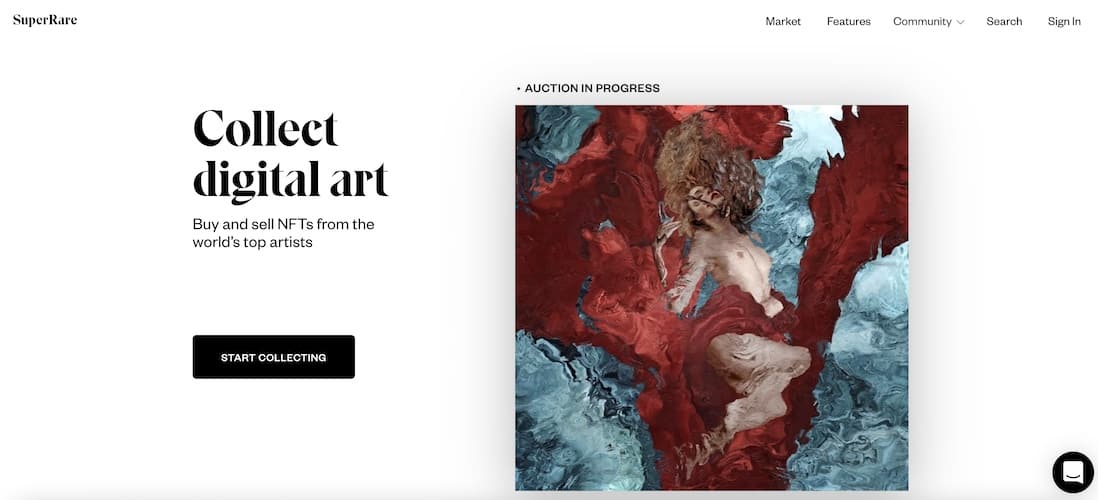
Supported blockchains: Ethereum
Business model: 3% from buyers; 15% fee for artists’ initial sales.
NFT Marketplace Must-Have Features
This NFT marketplace development guide wouldn’t be complete if we didn’t mention essential features we need to include for our marketplace to become successful.
NFT catalog
In its purest form, any NFT marketplace is an e-commerce platform and, as such, needs a storefront for displaying its inventory, whether it’s digital art, videos, songs, trading cards, or other digital assets or unique physical objects or documents.
Some of the options worth considering for creating highly engaging experiences include:
- categories and subcategories
- sorting and filters
- top charts
Crypto wallet integration
We can’t set up an NFT marketplace if it doesn’t have a crypto wallet that works with non fungible tokens. What if you onboard newbies who don’t have a crypto wallet? They will appreciate the option to create a crypto wallet right on the marketplace.
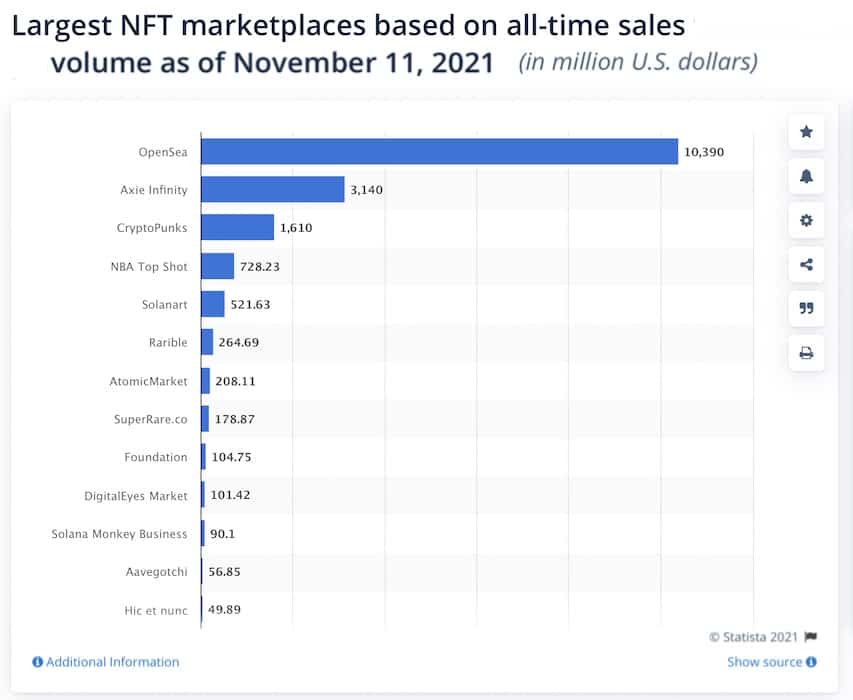
Auctions and other mechanisms for buying and selling
NFTs are typically sold via auctions (to elicit the highest price possible) or at a fixed price. However, you are free to experiment. What do you think about letting loyal customers slam-dunk other bidders by placing a 10x or whatever-the-number bid to immediately win the auction? There’s plenty of room to innovate how people buy and sell NFTs.
Minting NFTs
Most marketplaces also encourage users to mint their own NFT. Simply put, they take a digital asset provided by a customer and link it to a blockchain. When your cat gif has been added to a block on a chain, it becomes an NFT.
Miscellaneous
User profiles, settings, and notifications are pretty obvious. They always find their way into any software, and our NFT marketplace is not an exception. In addition, let’s consider adding:
- support section with a chatbot
- registration and login (duh!)
- favorites, user moderation
- nft listing status
Advanced features
As one would expect, we can’t just create an NFT project website like OpenSea and sit waiting for exponential growth. We have to envision at least one or two killer features.
I expect the best innovations coming from the merger of the typical marketplace options (buy/sell) with other DeFi functions like:
- using NFTs as collateral against loans
- allowing p2p NFT trading
- fractional NFT trading
- employing AI content management to block inappropriate images
How to Choose a Tech Stack to Create an NFT Marketplace Website
Technologies for creating a marketplace for NFTs will largely depend on the blockchain or blockchains you choose as the playing field for the product. For example, if you pick Ethereum, you’d need to work with Solidity. If Solana, with Rust, etc.
There are no limitations as far as the front end goes.
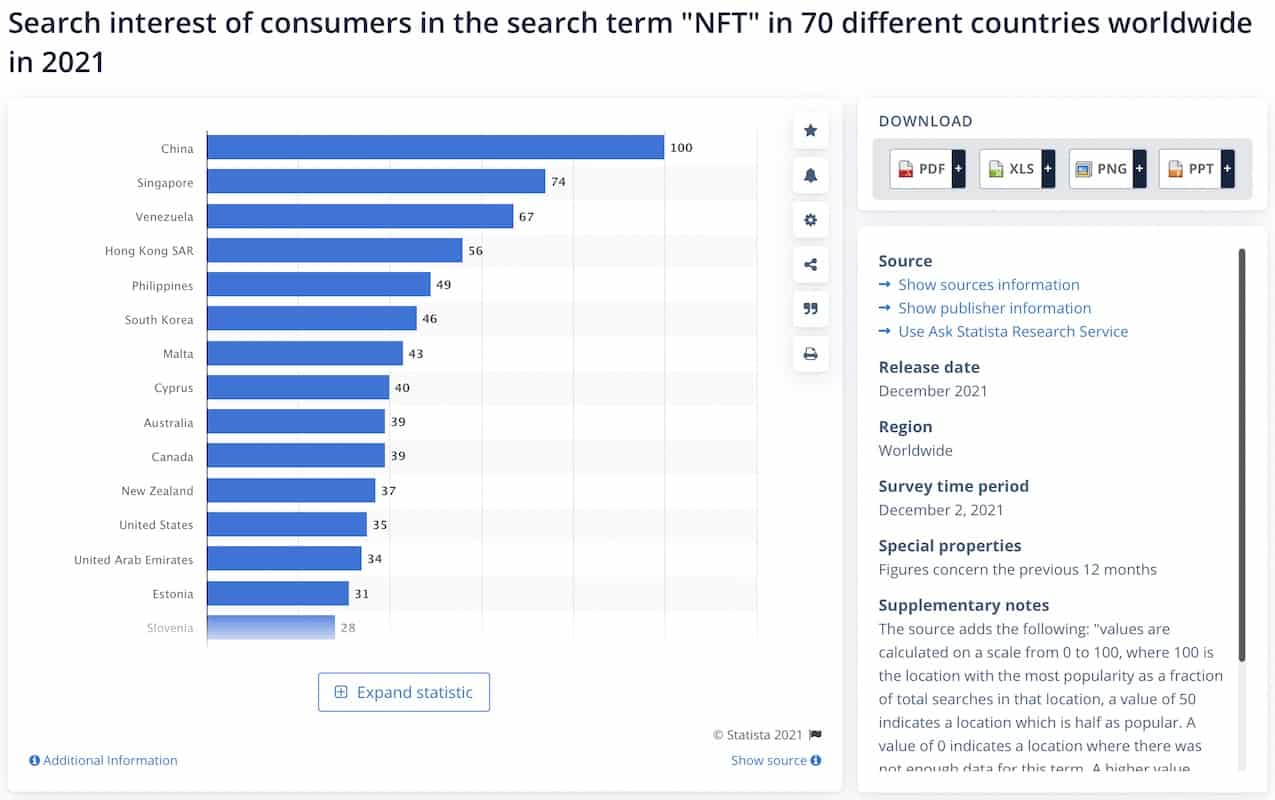
However, one thing to consider is applying ready-made third-party frameworks like Infura or Moralis, which simplify handling any blockchain-development tasks. For example, Moralis offers a dedicated NFT API.
Explore: Fintech App Development Services
Steps to Build an NFT Marketplace Platform
As we’ve already discussed, when you develop an NFT platform, you’re really working on an e commerce solution. The only difference is that this software needs to connect with a blockchain because it trades cryptographically secured items.
What steps do you need to take to make an NFT marketplace?
5.1 Step #1: Prepare your strategy
As always with software, NFT website development starts with an idea that you need to scrutinize from all possible angles: business, technologies, target audience, competitive edge, etc.
One of the top priorities will be choosing a blockchain to run on. Unfortunately, the most popular DeFi host, the Ethereum network, is currently crippled with insane fees because of the bull market and the slow proof-of-work validation mechanism for nft transactions.
However, you may pick other blockchains that are gaining momentum, e.g., Solana or Polygon, capable of processing thousands of transactions per second.
Among other things, you’ll need to answer such questions as:
- Do I want to use a white-label NFT or build an NFT marketplace from scratch?
- How will my NFT store differ from other marketplaces?
- Will my customers mint their own NFTs on the site?
- Which NFT standards should we support?
- How will customers pay for NFTs?
That’s just the beginning of the list, but you get the idea. At Topflight, we run a Preflight Workshop to sort out these uncertainties and form a high-level business plan for your product.
5.2 Step #2: Prototype
Once we have a basic understanding of the product roadmap, we can move on to prototyping the user interface (UI). At this stage, you should already know whether your users prefer mobile apps or a desktop experience.
This knowledge will guide the prototypes you will create: a mobile app or a web-based application. With sufficient funding, it can be both. If you’re struggling with deciding whether you should follow the mobile-first approach, here’s a decent write-up about mobile-first web design that can help you create an NFT store that blows the competition out of the water.
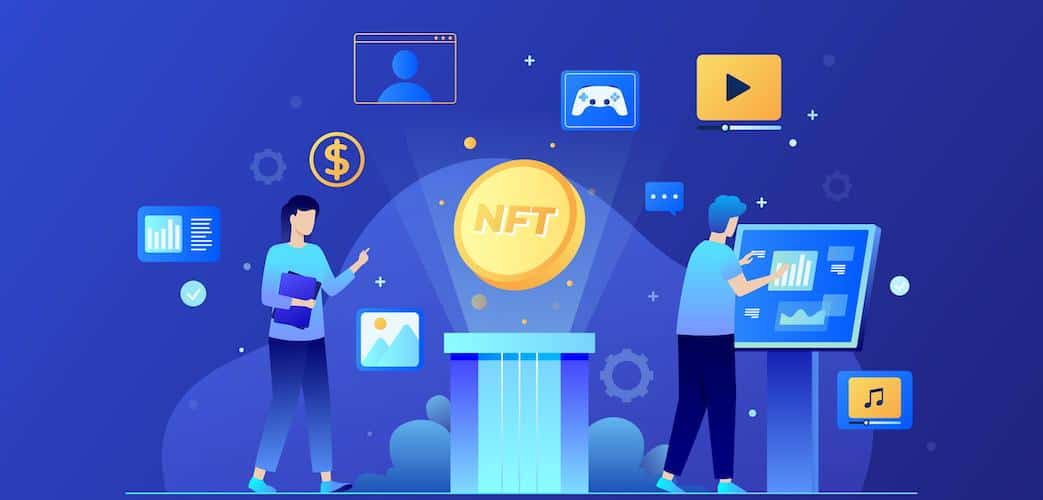
Such an approach guarantees that you’re not wasting your time and money coding something that doesn’t click with customers. In fact, prototyping is part of the whole agile project development process, allowing you to quickly iterate and release a user-friendly product that customers want and know how to use.
Therefore, I highly recommend that everyone starts to design an NFT marketplace with rapid prototyping.
5.3 Step #3: Develop and test
When the design is ready, developers can begin to code the NFT marketplace. There are plenty of things that go into that process. Even though coding mostly seems like magic to business owners, here’s a high-level view of what developers do when they make an NFT marketplace like OpenSea.
Smart contracts
NFT marketplace platform development entails lots of peculiarities, and smart contracts are a big part of them.
If you’ve read our blog on how to build a crypto token, you already know that every crypto token is effectively a smart contract under the surface. An NFT is just another smart contract, only of a different standard and with different properties. So in effect, when somebody mints an NFT, they create a smart contract with specific metadata.
Two prevalent types of NFT smart contracts are ERC-721 and ERC-1155. These work on the Ethereum blockchain, but other standards are introduced by other blockchains that mostly mimic the two mentioned above. For example, BEP-721 and BEP-1155 on Binance Smart Chain.
The main difference between ERC-721 and ERC-1155 is how many unique digital assets you’d like to introduce. While ERC-721 forges into a single asset, with ERC-1155, you may have multiple items, say, in-game swords. You may also want to support a royalty feature, allowing creators to receive a commission every time their NFT changes hands.
Besides smart contracts that your NFT marketplace customers use to mint their own non fungible tokens, you will need other smart contracts throughout the NFT marketplace to:
- process and manage payments in crypto
- introduce any DeFi functionality at all (loans, trading, etc.)
- handle any cross-chain NFT interactions
The good news is that you don’t have to develop your own blockchain. Smart contracts (carrying NFT token information) do the heavy lifting of connecting your store to a chain. Therefore, it’s a matter of choosing the right blockchain network when you build NFT marketplace platforms. For example, an NFT marketplace on Ethereum, Solana, or Matic makes a lot of sense.
To rationalize extra crypto options for your marketplace, read our blog on how to create a dApp.
Storefront
As you continue to build an NFT platform, you’ll need to tackle the user-facing pieces, aka front ends. The front end available for customers will still be a storefront, built either as an NFT site (web application) or a native mobile app. In this regard, NFT front-end development doesn’t differ too much from other software development projects.
The fact that prominent e-commerce vendors like Shopify offer out-of-the-box NFT marketplace experiences proves that any NFT marketplace is just a shopping site at the gist of it. No wonder, ecommerce NFT platform development is so huge today: crypto adepts love NFT shops with highly speculative assets.
Now, that doesn’t mean developing a scalable NFT marketplace is a walk in the park. You still need to foresee many things, such as automatic content moderation to keep inappropriate content off the platform, a reliable crypto/fiat payment gateway, etc.
With so many moving parts, one thing you must insist on is that developers apply a microservices architecture when they make an NFT platform. That ensures each part of the platform will be relatively independent, and it will be easier to maintain and scale the whole system as user adoption grows.
Testing
QA is a big part of any software development project. Proper testing starts just as coders begin to build an NFT website: by using automated testing and manual tests. A couple of things to consider:
- include testing in every sprint
- seriously consider regression tests when you create an NFT platform
- run an entire QA cycle on a test net before releasing
Agile
It’s important to remember that most successful software projects rely on agile. The goal of the agile approach is to iterate on features, gather customer feedback, and react to changing market conditions. As you can imagine, this alone is hard to overestimate in the dynamic crypto space.
As a result, you get to market faster and with a product that’s optimized for mass adoption. In addition, you also can manage the whole development process and see how your investment turns into a working product every step of the way.
Building your own in-house team and achieving this highly engaged creating process is hard to master and requires much more time and effort than hiring an experienced team.
Related: Agile App Development: Key to Building Successful Products
At Topflight, we see how agile helps our clients release products faster, with the best product-market fit, and therefore hit their target KPIs. When building an NFT marketplace, the traditional waterfall approach is simply not an option because too many platforms are competing.
5.4 Step #4: Deploy and monitor performance
When getting ready to release your NFT marketplace, you need to take into account at least these two things:
- you’re deploying several software packages that have their own environment
- a solid DevOps process needs to be in place to enable continuous development and integration for your product
What do I mean? Well, the storefront of your marketplace will probably run on a server as a web application with a database hooked into smart contracts (deployed to a blockchain). Plus, you’ll need to upload apps into the App Store and Google Play and go through a rigorous verification process with Apple and Google before the apps become available for the general public.
As for DevOps, it’s just a set of developer technologies and frameworks that simplify their work, automatically taking care of such mundane tasks as continuously preparing new test and product versions of the product, etc. Put simply, DevOps lets the team focus on adding features and fixing issues while you make an NFT website instead of wasting time on the pretty simple but necessary stuff.
5.5 Step #5: Upgrade and maintain
Finally, if you want to create an NFT website that will be wildly successful, you have to keep working on it even after the official launch. As you know, great products constantly evolve to address new opportunities and please their customers.
A team of experts would supply you with an admin portal to keep tabs on different aspects of your NFT marketplace performance. This includes tools like Google Analytics that help analyze user behavior and custom analytics pulling stats from the platform’s primary functions.
Hopefully, these steps provide you with enough info about the NFT marketplace development process to get started.
NFT Marketplace Development Cost
How much does it cost to develop an NFT marketplace? Totally depends on the scale of the project and whether you want to strap any DeFi options to the solution. A stripped-down version of an NFT marketplace would require $60,000 to release as an MVP version and start growing with more features while getting steady traction.
Related: App Development Costs: The Ultimate Guide
How to Make Money with an NFT Marketplace
Most NFT marketplaces make money by taking a commission when customers trade NFTs. This business model extends to other decentralized finance options you might want to include, such as trading NFTs or loans.
Some NFTs become the main in-app currency in virtual worlds and allow users to progress quicker and buy various perks.
Some companies remove fees for adding NFTs altogether to encourage users to join and mint their own NFTs. However, the fees will always apply to sellers or buyers.
In addition, you may establish partnerships with nft art studios to offer their inventory on your site for art lovers. All in all, the monetization strategy is yet another area for innovation. Just try to think out of the box; you can always fall back to fees, if anything.
If you’re looking to create an NFT marketplace that can take on such popular NFTs as CryptoPunks or Bored Ape Yacht Club, get in touch.
Related Articles:
- How to Build a DeFi App
- How to Develop a Blockchain Application
- How to Build a Fintech App
- How to make a blockchain payment system
- How to Develop a DeFi Staking App
- How to Build a DeFi Exchange Platform
- How to Start a DAO
- How to Make a Private Blockchain
[This blog was originally published on 5/1/2022 but has been updated with more recent content]
FAQ
Should I focus on web, or is it better to start with a mobile NFT marketplace?
It totally depends on how well you know your target audience and where you think it will be easier to reach them.
Do you think it will help to onboard more users if I take care of blockchain related transaction fees?
Definitely; however, you will need a mechanism to batch such transactions and process many in one go to cut the costs.
Can I sell only digital objects using the NFT business model?
People are selling all kinds of stuff. I saw someone selling unique AI-painted shoes. The sky’s the limit. NFTs are just a secure mechanism to establish and track ownership relying on the blockchain data.
Why would I build another NFT marketplace if there are already quite a few of them out there?
How many sites do you think make money trading shoes and t-shirts?
How long will it take to develop an NFT marketplace from scratch?
Between 6 and 9 months for the MVP version, including all preliminary work: design, etc.
